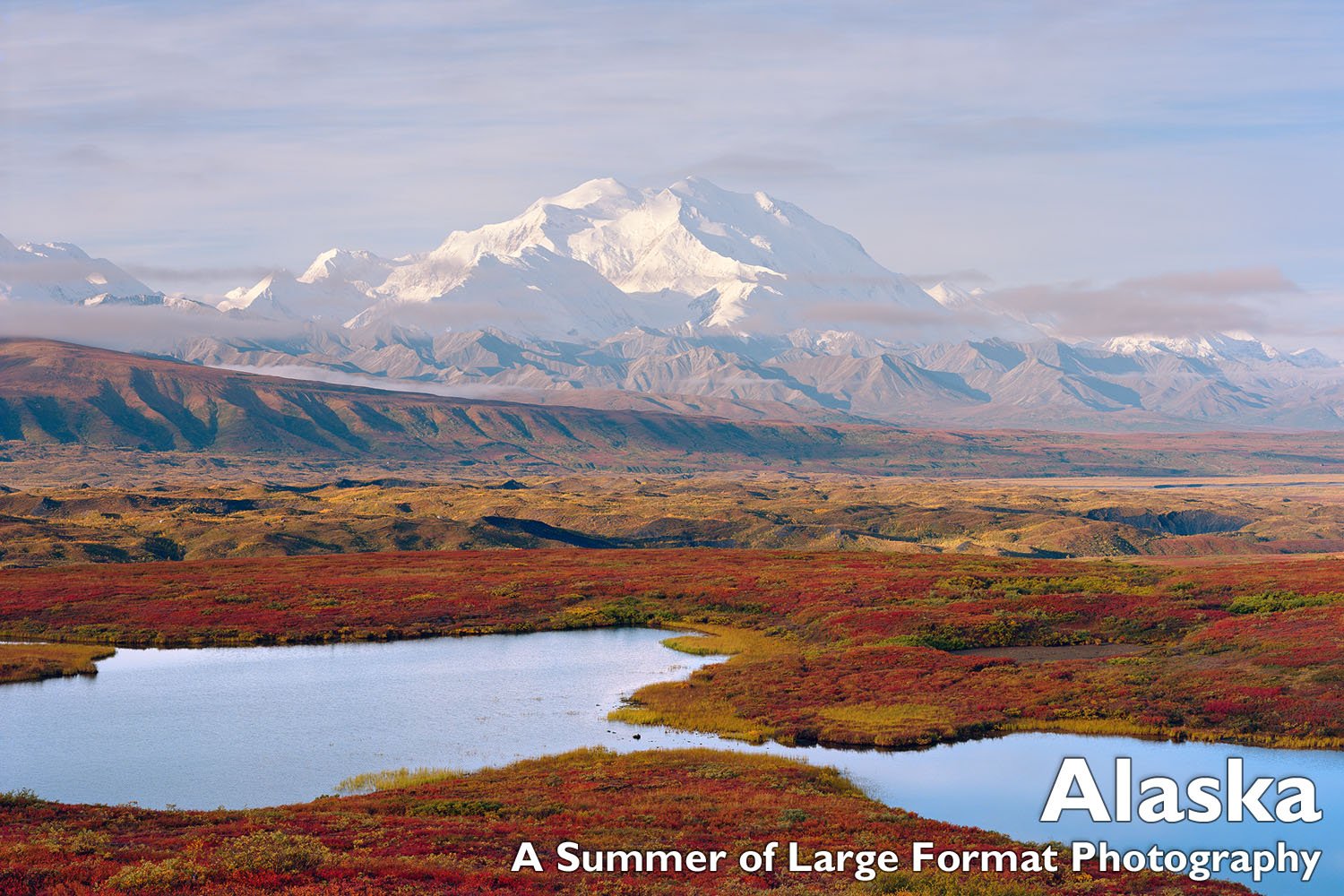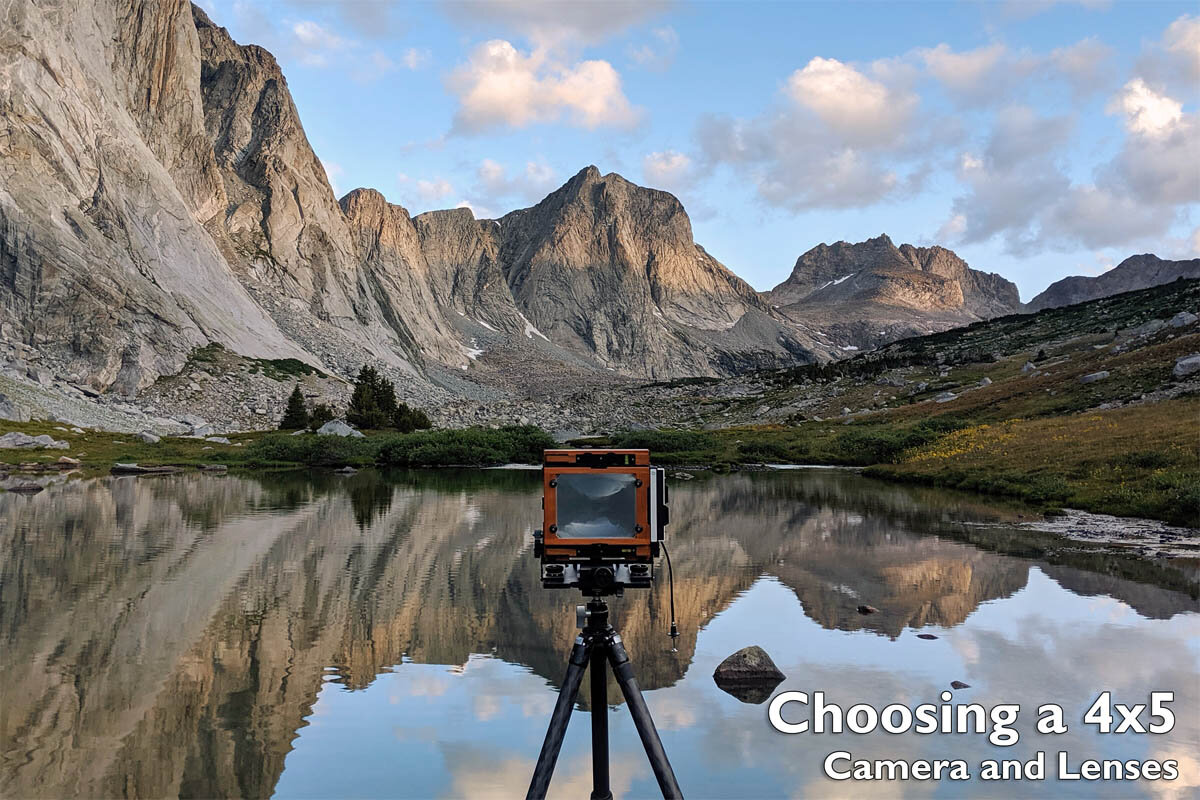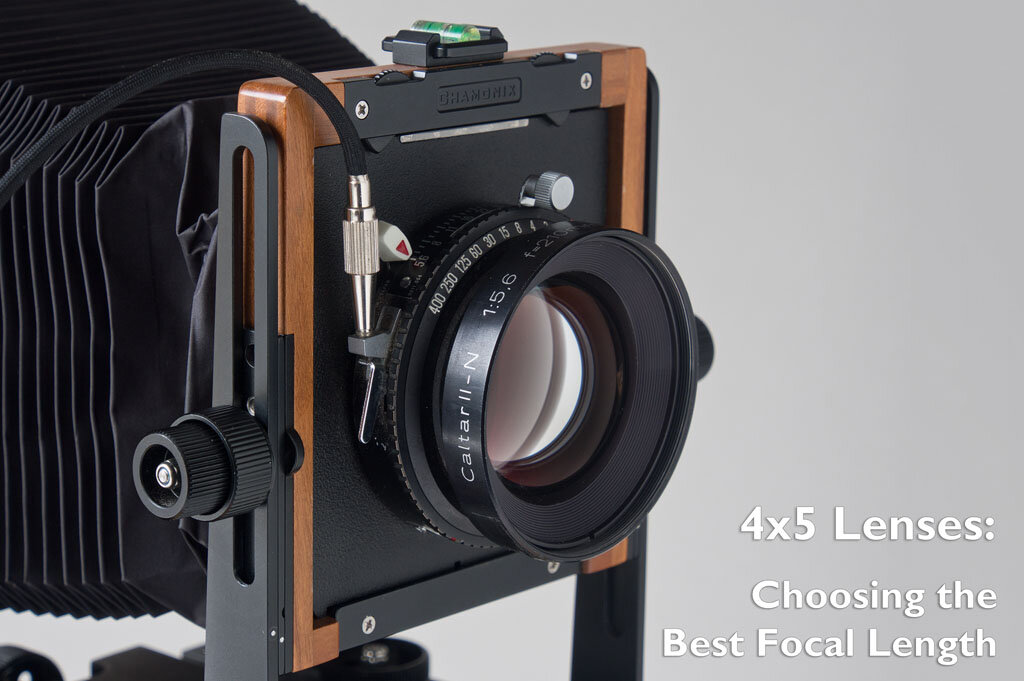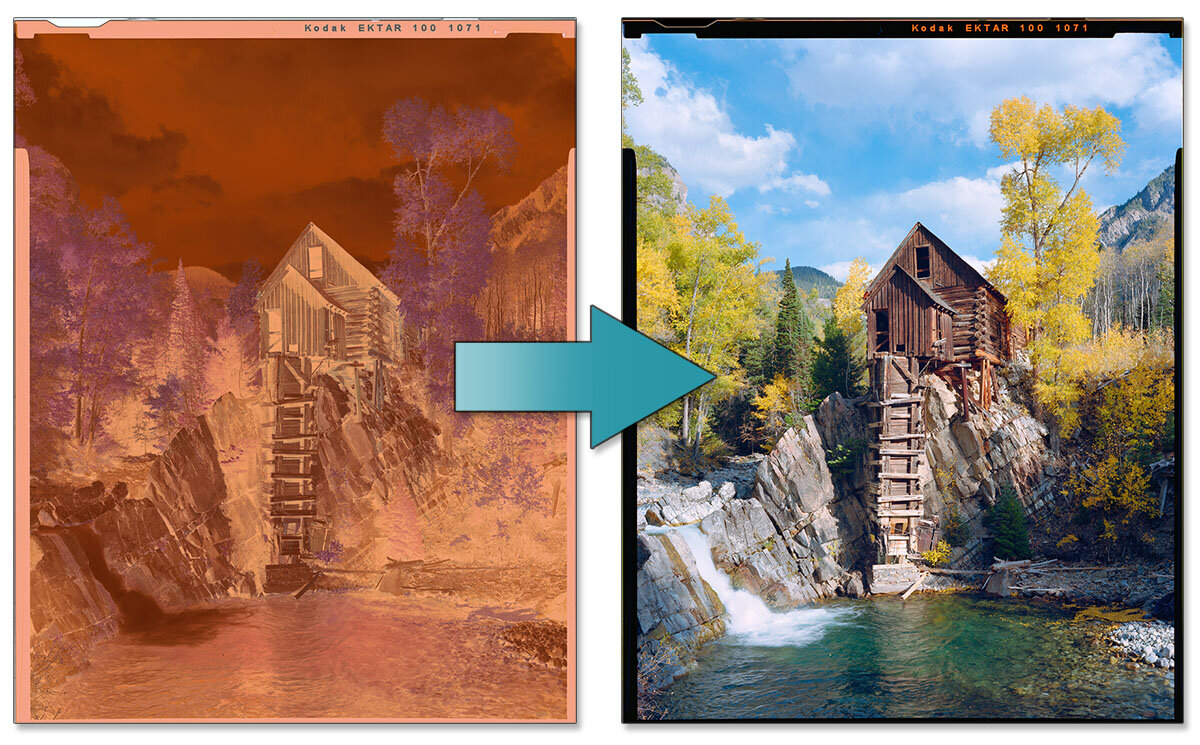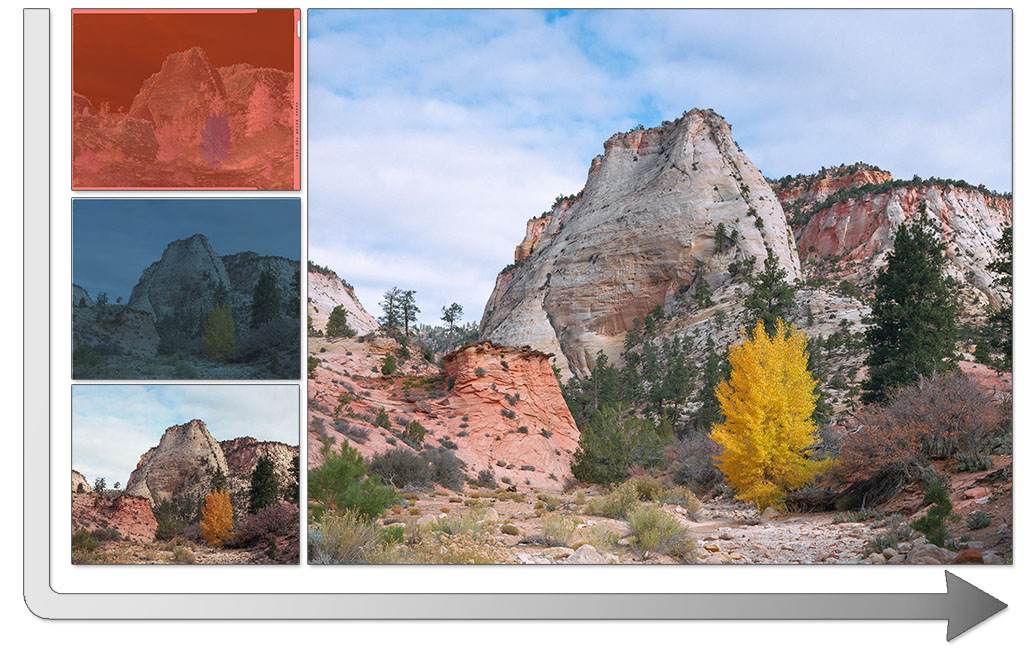Back in February and March I escaped the winter of Colorado and took a trip to New Zealand, rebooting an itinerary that had to be canceled back in March of 2020 for reasons we’re all too familiar with. My plan was to just visit the South Island as the mountains and glaciers were my biggest interest, so I booked a flight and a tiny one-person camper van for about 20 days. I also knew that I wanted to use 4x5 film as it's the system I’m most familiar with and the results always please me more than medium format film, though I will admit that the smaller roll film is much easier to travel with. This trip was an absolute blast with stunning scenery, wonderful people, and a very easy travel experience. For this article I want to talk a bit about how I got there with my large format film, and what it was like to wander around the island for a few weeks with the goal of getting as much photography time in as possible…
Read moreMaximum Print Size For Film Scans
It’s time to cover another frequent question that I get: How large can I print from a film scan? This question is most often asked by those who are curious about having me drum scan their film, but it also comes from many folks who are just asking about scanning in general. It is most often phrased as such, “How big can I print from a drum scan of 35mm film?” Today I want to explain how complicated that seemingly straightforward question is, and what factors come into play when considering the print sizes possible from different film formats…
Read moreHow to Select the Right Color Film
I’m frequently asked about my thought process when it comes to selecting a specific film type for a scene. I already have a regularly updated article on color film choices, but I think it’s worth expanding a bit into what actually goes through my head in the field and why I reach for a certain film. In many ways, this topic will be highly subjective and frequently comes down to a “gut feel” on location, but I’m going to attempt to distill my thoughts and provide some useful insight to help you choose the right film for a particular image. If you haven’t yet read my article on color film choices, you may want to do so first as it speaks about the qualities of each film type…
Read moreAlaska - A Summer of Large Format Photography
Now that some time has passed, and I’ve had the opportunity to work through most of my Alaska film, it’s time to write about the photography experience of the trip. Where the last post was all about the adventure, this one will focus more on the logistics and challenges of photographing up there - especially on large format film. I’m also going to use this article as a chance to share a significant number of images from the trip, all taken on large format film…
Read moreColor Film Choices for Landscapes
Updated - April 2023
One of the most common questions from fellow photographers is about the types of color films I use and why I use them. I figured this would be a good subject to write about to provide some insight on film types. The question frequently comes from someone who may have just gotten their first film camera and wants to know what kind of film to use for landscapes, as well as those who are committed to one film type but curious about trying something new…
Read moreAlaska - The Great North by Northwest Road Trip
Have you ever wanted to travel as far north and west as roads will take you in North America, to see a land covered in glaciers, tundra, and wilderness? It’s a idea that’s been on my radar for a decade; after a brief trip by plane I found the vast landscape to be captivating on a level I’d never experienced before. But to do it right required a slow tour with plenty of time, and the journey would be just as important as the destination. This meant seeing it by road, on a trip without a strict schedule and with months to burn. After being tied up with busy summers for years I decided to set aside the summer and autumn of 2022 and finally make it happen…
Read morePhotographing the Lunar Eclipse on Large Format Film
While I’ve always enjoyed seeing the moon turn red during an eclipse, I’ve honestly never made any attempt to capture it in an image. This time I decided to try something out, but I also wanted the image to appear like my own, something that would work with my personal style. The prairie was an obvious choice and I knew of a homestead that faced in the correct direction to make it work. Seeing how I shoot on film, I also wanted to get it right on just one sheet and not a composite. A multiple-exposure image of the eclipse progressing across the sky would be perfect for this spot…
Read moreKodak E100 - Pushing the Limits of Slide Film
A little over two years ago Kodak started offering its new E100 slide film in 4x5 sheets, which meant I was finally interested in it after the initial launch period made it sound like the film would only be available in rolls. While it was exciting that a new transparency film was being produced after a decade of gloomy discontinuations, I wasn’t quite sure where E100 would fit into my shooting style…
Read moreHow to Shoot Panoramas on Large Format 4x5 Film
Nothing quite captures a vast landscape or moody forest scene the way a panorama does; the wide, narrow format can emulate the way our mind sees these views by cutting out the mess and revealing only the essential visual interests. I’ve long been a fan of panoramas, especially when it comes to large print sizes…
Read moreFocus Scales for Large Format Cameras
Have you ever wanted to be a little more precise with focus when using a view camera? Where exactly should we set the focus and what aperture should we use to ensure a full depth of field with everything sharp from near to far? Raise your hand if you’ve ever used the method “just focus on something and stop down to f32.” It’s ok, I’m guilty of taking that approach myself. It works more often than we’d like to admit. But wouldn’t it be nice to know with 100% certainty that you nailed the focus and used the correct aperture?…
Read moreUsing Wide Angle Lenses on 4x5 Film
When first making the leap into the world of large format, it’s pretty common to start off with a lens somewhere around 135mm or 150mm. It’s a great and affordable standard focal length to get your toes wet in the format, I still use a 135mm all the time because it’s just so natural. However, almost everyone will find themselves wanting more than one lens at some point. If your tastes take you into the world of portraits or closeup nature, chances are you’ll want something longer. If grand scenic landscapes are your calling then you’ll inevitably desire something wide….
Read moreChoosing a 4x5 Camera and Lenses
2020 Update
Since I last wrote this article nearly three years ago, the interest in large format film seems to have skyrocketed. With this comes a wealth of new users, many who have never set their eyes on a view camera. Initially this was a post I had put off for a long time for a variety of reasons, the foremost being that I’ve never talked too much about gear because I find large format cameras to be such simple devices that hardly have any level of modern technology. Another reason is because there's much more…
Read more4x5 Lenses - Choosing the Best Focal Length
Whether you’re just starting out with large format photography or looking for the next lens to expand your shooting style, choosing the proper focal length for the scene makes a big difference. What I’ve noticed with 4x5 is that unlike smaller formats, it’s a lot harder to pick out what focal length a photographer used when taking an image. When viewing an image shot on a DSLR of a flower bush pressed close to the lens and a grand mountain scene in the background, it’s often easy to tell that an extreme wide-angle lens was used. This becomes a little more difficult to pick out when a wide angle lens is 75mm compared to 24mm and distortion almost unnoticeable. This has led to a lot of people asking me “what focal length did you use for this image?”…
Read moreFlying with 4x5 Film - Hand Check Labels
This is just going to be a quick one! As many of you may know, new CT scanners are being installed in airports around the world at a rapid pace. These new scanners are being used to inspect carry on baggage and Kodak has reported that only one pass through the scanner will destroy your film. For decades it has been the recommendation to simply let your film go through the carry on X rays, but that is no longer the case….
Read morePushing the Dynamic Range of Color Negative Film
“Sunflower Sunset” - Backlit scenes are no trouble with color negative film. A filter was left off for this image to avoid flare troubles with the sun. The foreground (also the important part) was average metered and the sky ignored when taking the meter reading. Ektar 100 4x5, 210mm lens, 2 seconds at f45, no filters.
Color negative film has increasingly become a larger part of my workflow over the last several years and with good reason: the flexibility of the stuff is just phenomenal. It can be used to capture all the delicate subtleties of a low contrast scene as well as landscape scenes with intense dynamic range. If you don’t know what you will be getting into when you head out for a shoot it’s an excellent choice because it can handle anything you throw at it, but that doesn’t mean it can’t be used for a specific purpose or aesthetic either. Color negatives are the film type that I get the most questions about, mostly because people see such a wide variety of looks coming out of the same film types…
Read moreManual Inversion of Color Negative Film
This one is for you DSLR scanning folks, or those who want more control out of your film scanner. It’s been just about three years now that I’ve been using a drum scanner which has drastically changed my scanning process with color negative film. While the software for this scanner is incredibly powerful, it falls apart when it comes to inverting color negatives. This means that I had to develop a method to do this on my own that can work for every image I throw at it. While I love sharing my findings with the film community, I wasn’t sure that a technique I developed for drum scanning would be helpful to the average shooter. It turns out that this manual inversion can work no matter what you use to scan your film with…
Read moreMetering and Shooting Kodak Portra Film
If you’ve been following me for a while - especially my recent work - you’ve probably noticed that I’ve got a passion for Portra. This film can have such a unique color palette that is flattering for many types of subjects and light conditions, but it’s also one of the films that I’ve gotten the most questions about when it comes to metering and shooting…
Read moreUsing a Large Format Camera in the Dark
If you’ve browsed through my images, chances are you’ve noticed that I’m a big fan of twilight and early morning light; the soft warm glow on the landscape is just sublime. Shooting in twilight comes with its own set of challenges, but those are greatly increased when trying to use a large format view camera. I’m going to share some tips that can help you out when the light is fading fast, or when you arrived well before sunrise and don’t want to miss the morning glow because you can’t see anything…
Read moreScanning and Editing Color Negative FIlm
One of the top questions I get from other film photographers is “How do you get those colors out of your film scans?” This was true back in 2013 when I first wrote this post and it’s still true today, so it’s time for a complete overhaul of this article. We all grow as photographers and over time my process has been changed and tweaked ever-so-slightly. The scans that I’ve gotten the most questions about are my color negative images, particularly Kodak Ektar…
Read moreThe New Intrepid 4x5 MK3 - Field Test and Review
After a year of backpacking with the intrepid 4x5 camera, I realized I was really falling in love with the idea of just using a lightweight wooden box to create images. I used the “older” mk2 version last summer during several trips…
Read more



